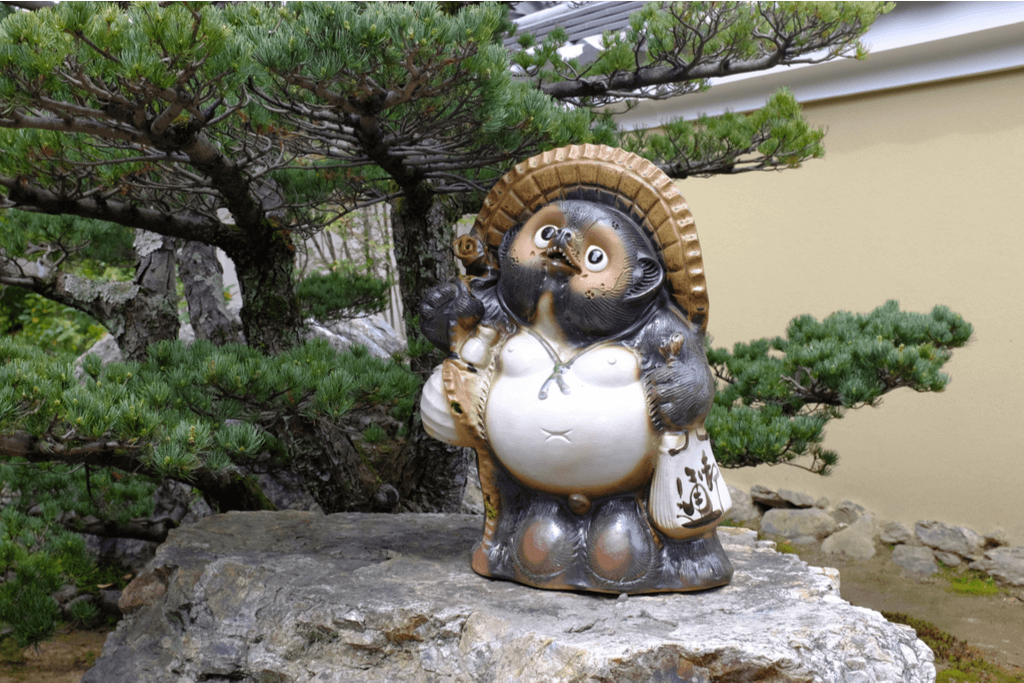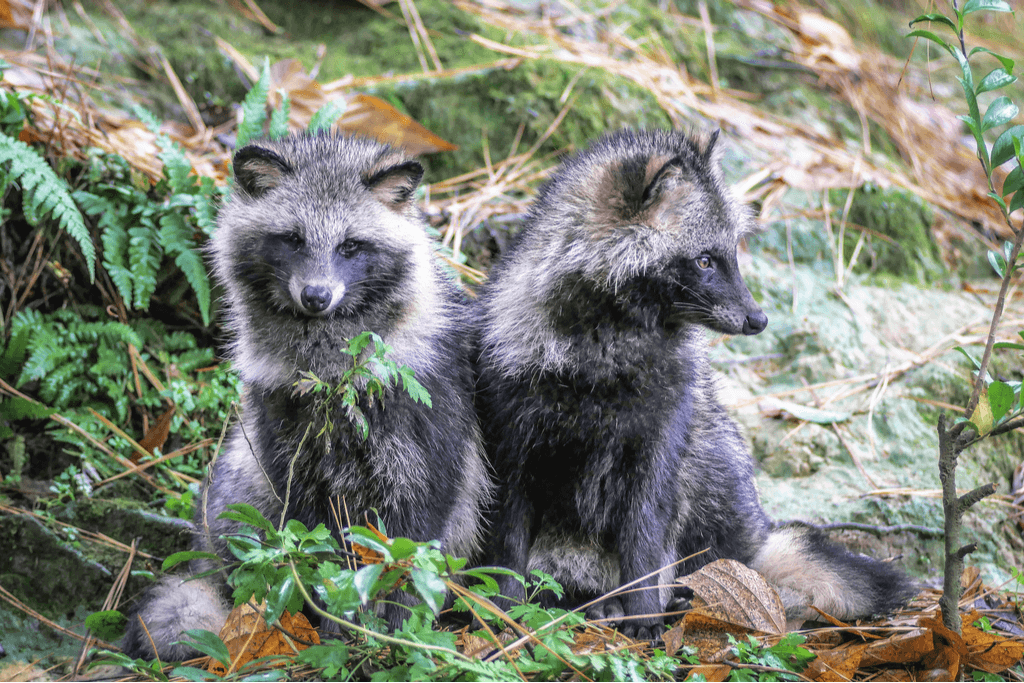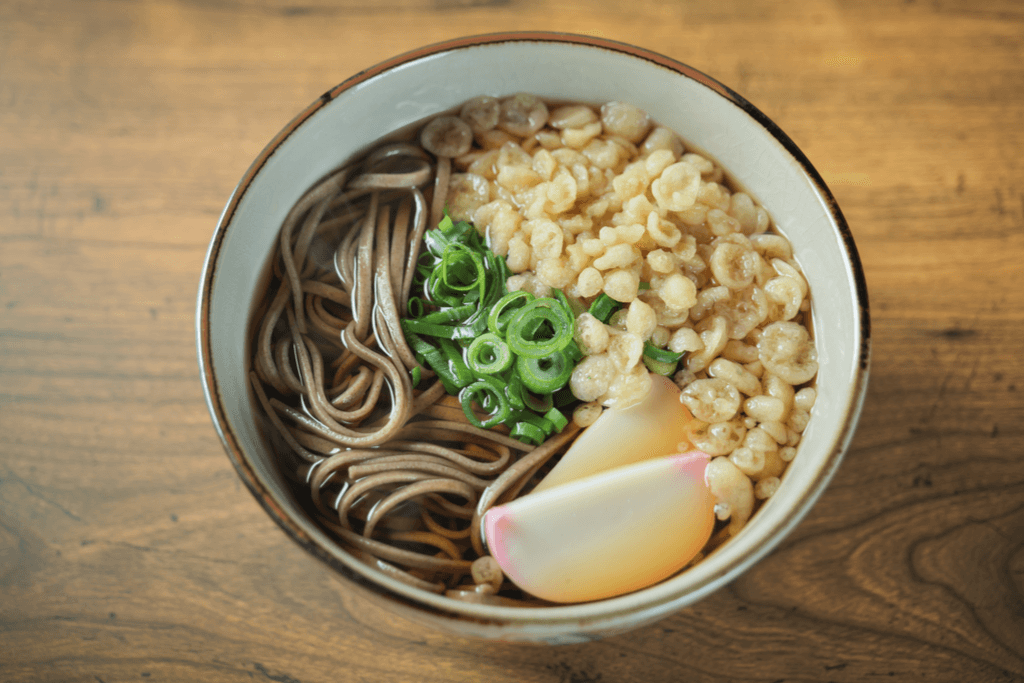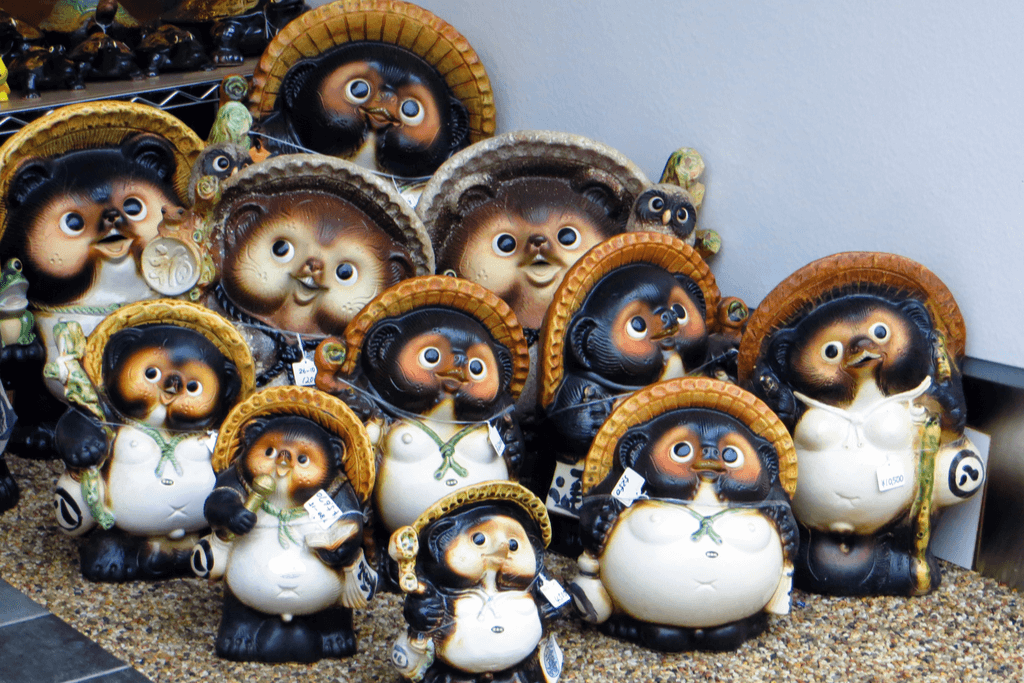culture
Tanuki Magic: Exploring Japan’s Raccoon Dog Folklore!
Linh Le
Posted on May 26, 2022
Share:

Along with kitsune (Japanese fox), the tanuki (Japanese raccoon dog) is also a strange yokai (Japanese ghost or spirit) famous for its ability to transform in Japanese folklore. However, suppose kitsune or the Japanese kappa are considered more dangerous and scheming yokai. In that case, the tanuki is more mischievous and lovable, possessing a lot of magic but primarily harmless to humans. The tanuki is known as the mascot of prosperity in Japan.
What is a Tanuki?
At first glance, the tanuki looks like a cat bear, but they are mythological raccoons with sharp teeth. According to Japanese folklore, the tanuki is well-adapted to various environments, from mountain forests to urban areas, and possesses various magical abilities. Unlike foxes in the myths of many countries worldwide, tanuki are only in Japan.

Some people interpret its luck by using homophony. Ta「他」(other things) and nuki-「抜き」(to omit) can ultimately be understood as abandoning all else and leaving only the good things. In the West, people mainly know tanuki through video games such as Super Mario Bros 3. The Mario character can especially use an outfit called the Tanooki Suit, allowing him to fly and transform into a statue. Meanwhile, Animal Crossing players may recognize this creature thanks to Tom Nook.
Inspired to learn more about Japanese culture? Check out Sakuraco! Sakuraco sends authentic Japanese snacks, sweets, teas, tableware, and more right to your door straight from local Japanese makers with a complete snack and cultural information guide.
The Eight Symbolic Meanings of Tanuki Statues
The Tanuki statue’s image has changed to something somewhat different from reality. The features on the statue are “hassoengi“(八相縁), representing the eight signs of good luck.
- A hat to protect yourself from trouble and unexpected accidents.
- Big eyes help you observe and pay attention to everything around you to make the right decisions.
- A smiley face represents friendliness and being kind to others.
- Their wine bottle contains Japanese sake (rice wine) with the meaning of learning the qualities and character of a person who does not have to worry about eating.
- The book is a place to record cash in and out. This is an important item to create trust when borrowing money with the desire to build a trusting relationship between people.
- The belly drum represents a steady, calm, and daring attitude when handling situations.
- The “golden bags” represent luck that will get better and better and create more and more money or fortune.
- Their big tail helps to support the balance of the body, implying stability. It also represents the end, so it also has another meaning of wishing everything to end firmly.

Tanuki’s powers in Japanese legends
There are many legends about tanuki, its personality, and its magical power. Although humans often tease them, they are also famous for their mildness, being willing to help those who treat them well.
Transformation
The tanuki’s most outstanding power is transformation. They’re fond of transforming into humans and imitating human lifestyles and their terrible habits. Tanuki often pretends to be human beings who enjoy drinking, gambling, cheating, stealing, and lying. They’ve even impersonated monks who studied Buddhism and taught it to people.
Thanks to his transformation techniques, intelligence, and quick adaptability, these creatures can live almost a lifetime in human guise without being easily spotted.
Mischief Making
However, one of the more popular hobbies of these creatures is pranking humans. They can become household items to tease you, giant monsters to scare you, or turn leaves into money to cheat.

Tanuki also often make jokes about humans, such as pretending to talk to farmers in the dark or making fishermen think their nets are full of fish, but the fishing nets are empty.
They also often turn into local officials, go to houses, and play many weird tricks to prank the owner.
According to legend, there are ways to determine if a person is a tanuki based on the kimono they wear. Additionally, if someone walks in the rain and remains dry, they may be a tanuki. TanuTanukis’ic becomes unstable while distracted, which can lead to their tails being exposed.
The Golden Bags
An attractive characteristic that comes to mind when anyone thinks of a tanuki is its “golden bags.” According to legend, this creature can stretch the skin as wide as eight tatami mats in that area. Ancient people described the pulled skin as turning into a sail, fishing net, swimming pool, or even a shield against an enemy.
Have you seen a tanuki in real life in Japan? What other myths about this unique creature have you heard about? Let us know in the comments below!

Discover authentic flavors with Sakuraco
Get Sakuraco 
4 Responses
I’ve had a large metal Tanuki statue for decades, but I always thought he was a bear. I was told that he’s a mascot of Hokkaido.

That’s true, the Tanukikoji Shopping Street in Sapporo has a tanuki for a mascot. 🙂

Discover authentic flavors with Sakuraco
Get Sakuraco 
Related Articles

Tokyo Gardens: Five Beautiful Traditional Japanese Gardens to Visit
Tokyo gardens offer a relaxing escape for visitors looking to get a breath of fresh air. However, Tokyo has more than just the typical gardens we see in the West. Let’s explore five traditional Japanese gardens and what makes them unique!

Japan Cruise Spotlight: The Ultimate Guide to Abashiri Icebreaker!
Japan offers a diverse range of cruise experiences, taking in various stunning landscapes. But, in the chilly grip of winter, some voyages pull in adventurers from around the globe. At the forefront of these wintry trips is the Abashiri Icebreaker Cruise in Hokkaido.

Money Envelopes in Japan: Exploring the World of Shugi Bukuro
Attending a Japanese wedding or celebratory event for the first time can be daunting, especially when it comes to gift-giving. Although it may seem complicated, we’ll break it down so that you have nothing to worry about.

Japanese Head Spa: What’s The Amazing Secret?
In Japan, self-care is deeply ingrained in culture, and among the many treatments gaining attention worldwide, the Japanese head spa stands out. Unlike regular shampoo treatments, head spas combine deep cleansing, gentle massage, and aromatherapy to refresh both the scalp and the mind.




So informative! Thank you 😊
You are very welcome!